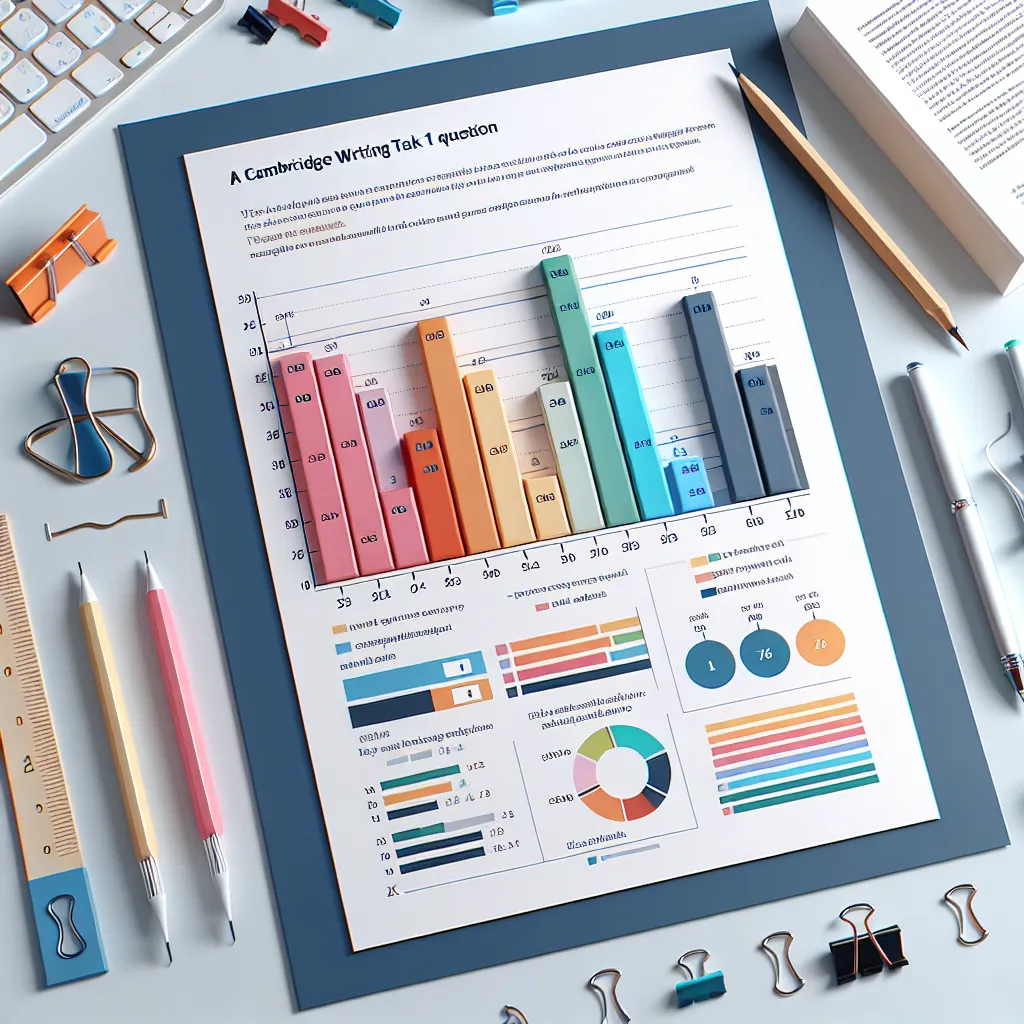Are you preparing for the Cambridge IELTS or Cambridge English exams? If so, you’ll likely encounter bar chart questions in Writing Task 1. These questions can be challenging, but with the right approach, you can master them and boost your score. In this comprehensive guide, we’ll explore effective strategies for answering Cambridge Writing Task 1 bar chart questions, providing you with valuable insights and practical tips to excel in your exam.
Understanding Bar Chart Questions in Cambridge Writing Task 1
Bar chart questions are a common feature in Cambridge Writing Task 1. They typically present data in vertical or horizontal bars, requiring you to describe, compare, and analyze the information provided. Understanding the nature of these questions is crucial for crafting a well-structured and accurate response.
 Cambridge Writing Task 1 Bar Chart
Cambridge Writing Task 1 Bar Chart
Key Components of Bar Chart Questions
- Title: Provides context for the data presented
- X-axis and Y-axis labels: Indicate what the bars represent and the scale of measurement
- Legend: Explains different colors or patterns used in the chart (if applicable)
- Time periods: Often compare data across different years or time frames
Strategies for Answering Bar Chart Questions
To effectively answer bar chart questions in Cambridge Writing Task 1, follow these proven strategies:
1. Analyze the Chart Carefully
Before you start writing, take a few minutes to examine the bar chart thoroughly. Identify the following elements:
- Main topic or theme
- Units of measurement
- Time periods or categories represented
- Highest and lowest values
- Any significant trends or patterns
2. Plan Your Response
Organize your answer using this structure:
- Introduction: Provide an overview of the chart
- Body paragraph 1: Describe the main features and trends
- Body paragraph 2: Compare and contrast specific data points
- Conclusion: Summarize the key information (optional, but recommended)
3. Write a Clear Introduction
Your introduction should:
- Paraphrase the question
- Provide an overview of the chart’s main features
Example:
“The bar chart illustrates the annual revenue of four different companies from 2018 to 2022. It shows significant variations in financial performance among the businesses over the five-year period.”
4. Describe the Main Features
In the first body paragraph:
- Highlight the most prominent trends or patterns
- Use appropriate language to describe increases, decreases, or stability
Example:
“Overall, Company A experienced the most substantial growth, with its revenue more than doubling from 2018 to 2022. In contrast, Company D showed a gradual decline throughout the period.”
5. Compare and Contrast Specific Data
In the second body paragraph:
- Select key data points to compare and contrast
- Use precise language and specific figures to support your observations
Example:
“In 2018, Companies B and C had similar revenues of approximately $5 million. However, by 2022, Company B had increased its revenue to $8 million, while Company C remained relatively stable at $5.5 million.”
6. Use Appropriate Language and Vocabulary
Employ a range of vocabulary and grammatical structures to enhance your response:
- Verb tenses: Use past tense for historical data and present perfect for current trends
- Comparative and superlative forms: “higher than,” “the highest,” “more substantial”
- Linking words: “however,” “in contrast,” “whereas,” “while”
7. Incorporate Data and Figures Accurately
When mentioning specific data:
- Round numbers appropriately (e.g., 5.37 million to 5.4 million)
- Use approximations when exact figures aren’t necessary (e.g., “approximately,” “around”)
- Ensure unit consistency (e.g., don’t mix millions and thousands)
8. Avoid Common Mistakes
Steer clear of these pitfalls:
- Don’t describe every single data point
- Avoid personal opinions or speculations
- Don’t copy the exact wording from the question or chart labels
Practice and Refinement
To improve your skills in answering Cambridge Writing Task 1 bar chart questions:
- Practice regularly with sample questions
- Time yourself to ensure you can complete the task within 20 minutes
- Review model answers and compare them to your responses
- Seek feedback from teachers or study partners
 Cambridge Writing Practice
Cambridge Writing Practice
Conclusion
Mastering Cambridge Writing Task 1 bar chart questions requires careful analysis, strategic planning, and clear, accurate writing. By following the strategies outlined in this guide and practicing consistently, you’ll be well-prepared to tackle these questions confidently in your Cambridge exam. Remember to focus on describing the main features, comparing key data points, and using appropriate language throughout your response. With dedication and the right approach, you can excel in this crucial component of the Cambridge Writing test.
[internal_links]




